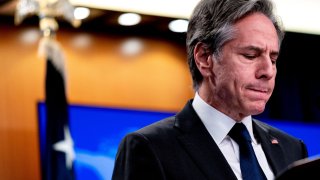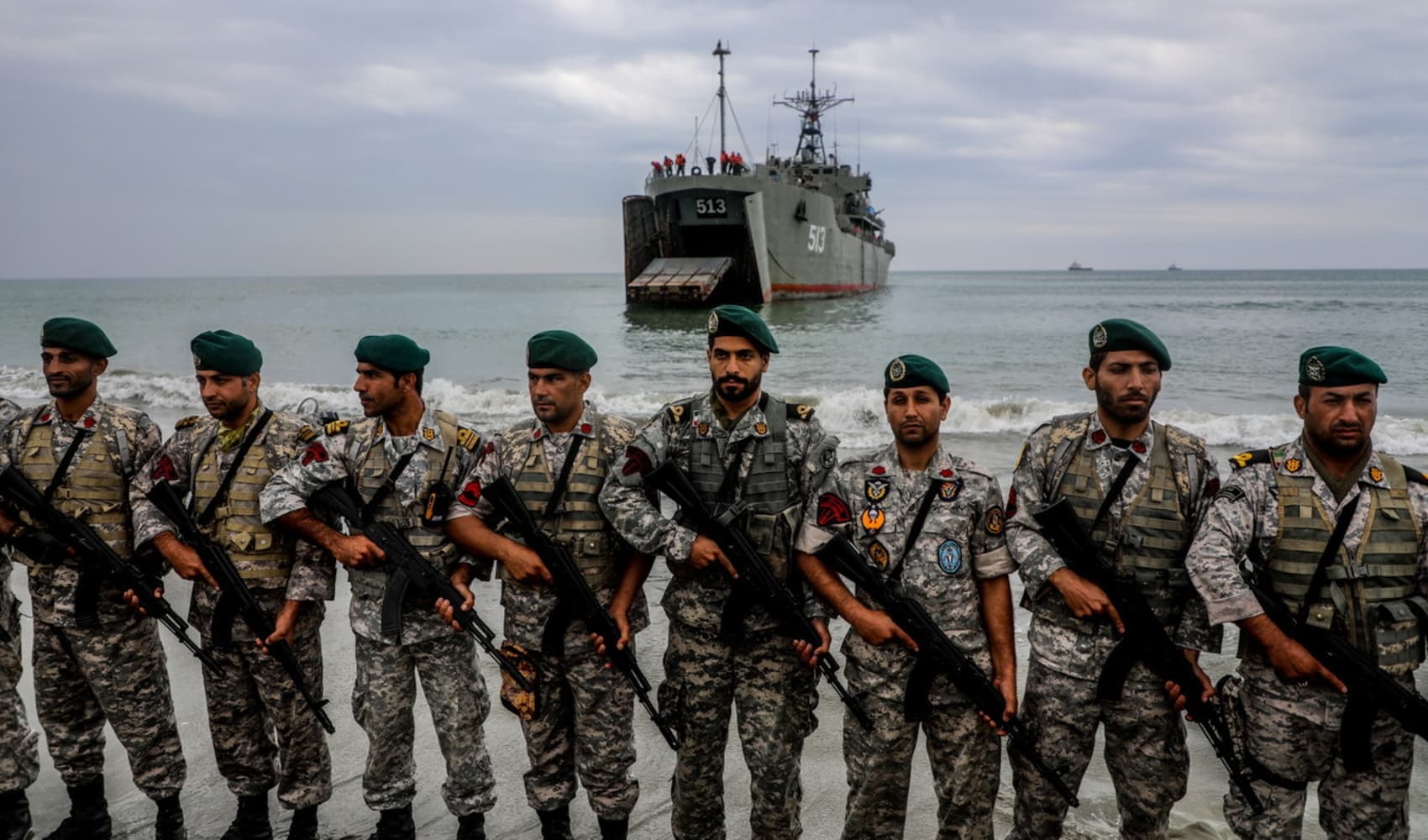
- Secretary of State Antony Blinken will visit Ukraine this week and meet with President Volodymyr Zelenskyy.
- The trip comes as the Biden administration works with allies to deter Russia from a potential invasion of its neighbor.
- For months, the Ukrainian government has warned the U.S. and European allies that Russian troops were massing along its eastern border.
- "We are now at a stage where Russia could at any point launch an attack on Ukraine," a senior State Department official said on a conference call with reporters on Tuesday.
WASHINGTON – Secretary of State Antony Blinken will visit Ukraine this week and meet with President Volodymyr Zelenskyy. The trip comes as the Biden administration works to deter Russia from a potential invasion of its neighbor.
Blinken will land in Kyiv on Wednesday where he will meet with Zelenskyy and Ukrainian Foreign Minister Dmytro Kuleba. The nation's top diplomat will also meet with the employees and families at the U.S. Embassy compound there to communicate contingency plans should Russia choose to escalate further.
Ahead of the trip, Blinken spoke to his counterpart, Russian Foreign Minister Sergey Lavrov, on Tuesday and reiterated calls for Moscow to de-escalate tensions by reducing its military build-up along Ukraine's border. During the call, the two agreed to meet in Geneva on Friday.
Feeling out of the loop? We'll catch you up on the Chicago news you need to know. Sign up for the weekly Chicago Catch-Up newsletter here.
Before heading to Switzerland, Blinken will travel to Berlin on Thursday to meet with German Foreign Minister Annalena Baerbock to discuss joint efforts to deter further Russian aggression against Ukraine. He will raise questions about allies' and partners' readiness to impose sweeping consequences and severe economic costs on Russia in the wake of an invasion.
Blinken's trip comes on the heels of multiple high-stakes discussions between U.S. and European officials and their Russian counterparts. Following those meetings, the Biden administration accused Russia of preparing a "false flag operation" to use as a prelude for an invasion of Ukraine. Russia has denied any such preparations.
"We are now at a stage where Russia could at any point launch an attack on Ukraine," a senior State Department official said on a conference call with reporters on Tuesday.
Money Report
"President Putin created this crisis by enacting 100,000 Russian troops along Ukraine's borders. This includes moving Russian forces into Belarus over the weekend. This is neither an exercise nor a normal troop movement. It is a show of strength designed to cause or give a false pretext for a crisis as Russia plans for a possible invasion," the official, who spoke on the condition of anonymity in order to share details of the trip, added.
A second senior State Department official said that military exercises require notification of 42 days in advance and exercises that involve more than 10,000 troops require international observers. "These numbers are beyond of course what we would expect with regards to a normal exercise," the official said.
"What I know about the Kremlin, and what I know about President Putin is that he is an opportunist and he creates opportunities," the official said.
"And so, it is incredibly important that we focus on when we see these kinds of instances. And when there is a concrete change in capability, that we acknowledge it and we see we call it for what it is in terms of his ability to create that opportunity," the official added.
White House press secretary Jen Psaki said Friday that intelligence agencies monitoring Russian cyber operations against Ukraine believe the pattern of activity could signal a ground invasion of Ukraine within the next 30 days.
The new timeline is the latest sign of how imminent the Biden administration believes a Russian attack against Ukraine could be, and how urgent its effort to negotiate a peaceful settlement has become.

For months, the Ukrainian government has warned the U.S. and European allies that Russian troops were massing along its eastern border.
The buildup has evoked Russia's 2014 annexation of Crimea, a peninsula on the Black Sea, which sparked an international uproar and triggered a series of sanctions against Moscow.
The seizure of Crimea also saw Russia's removal from the "Group of 8," or G-8, referring to the eight major global economies.
"We saw this playbook in 2014, and they are preparing this playbook again," national security advisor Jake Sullivan told reporters at the White House last week, adding that the United States is "ready either way."
The Kremlin has previously denied that it was preparing for an invasion.
"The United States does not want conflict, we want peace. President Putin has it in his power to take steps to de-escalate this crisis so the United States and Russia can pursue a relationship that is not based on hostility or crisis," a senior State Department official said.
At the Pentagon, spokesman John Kirby told reporters that the Defense Department has seen "no signs of de-escalation."
"It would be difficult for us to say with specificity and certainty what we know Mr. Putin is driving at here and what his actual goals are. He is clearly building up a force posture there that provides him with multiple options," Kirby said of the additional Russian troops deployed to Belarus.
"Of course, the option that we would prefer is for him to deescalate to take, take the tensions down and of course, one of the easiest ways to do that would be to remove some of that force presence," he added.
Last month, President Joe Biden spoke with Russian President Vladimir Putin twice amid the significant military buildup on the Ukrainian border. During the first call on Dec. 7, Biden declined to accept Putin's "red lines" on Ukraine, including that the country would never be allowed to join the North Atlantic Treaty Organization known as NATO.
Since 2002, Ukraine has sought entry into NATO, where the group's Article 5 clause states that an attack on one member country is considered an attack on all of them.
Last week, Russian officials reiterated to NATO members and U.S. officials that it is "absolutely mandatory to make sure that Ukraine never, never, ever becomes a member of NATO."
"We need ironclad, waterproof, bulletproof, legally binding guarantees. Not assurances, not safeguards, but guarantees," Russian Deputy Foreign Minister Sergei Ryabkov told reporters during a Jan. 10 press conference.
During the leaders' most recent call, on Dec. 30, Biden reiterated concerns and renewed threats that his administration would "respond decisively" alongside allies and partners if Russia invades Ukraine.






